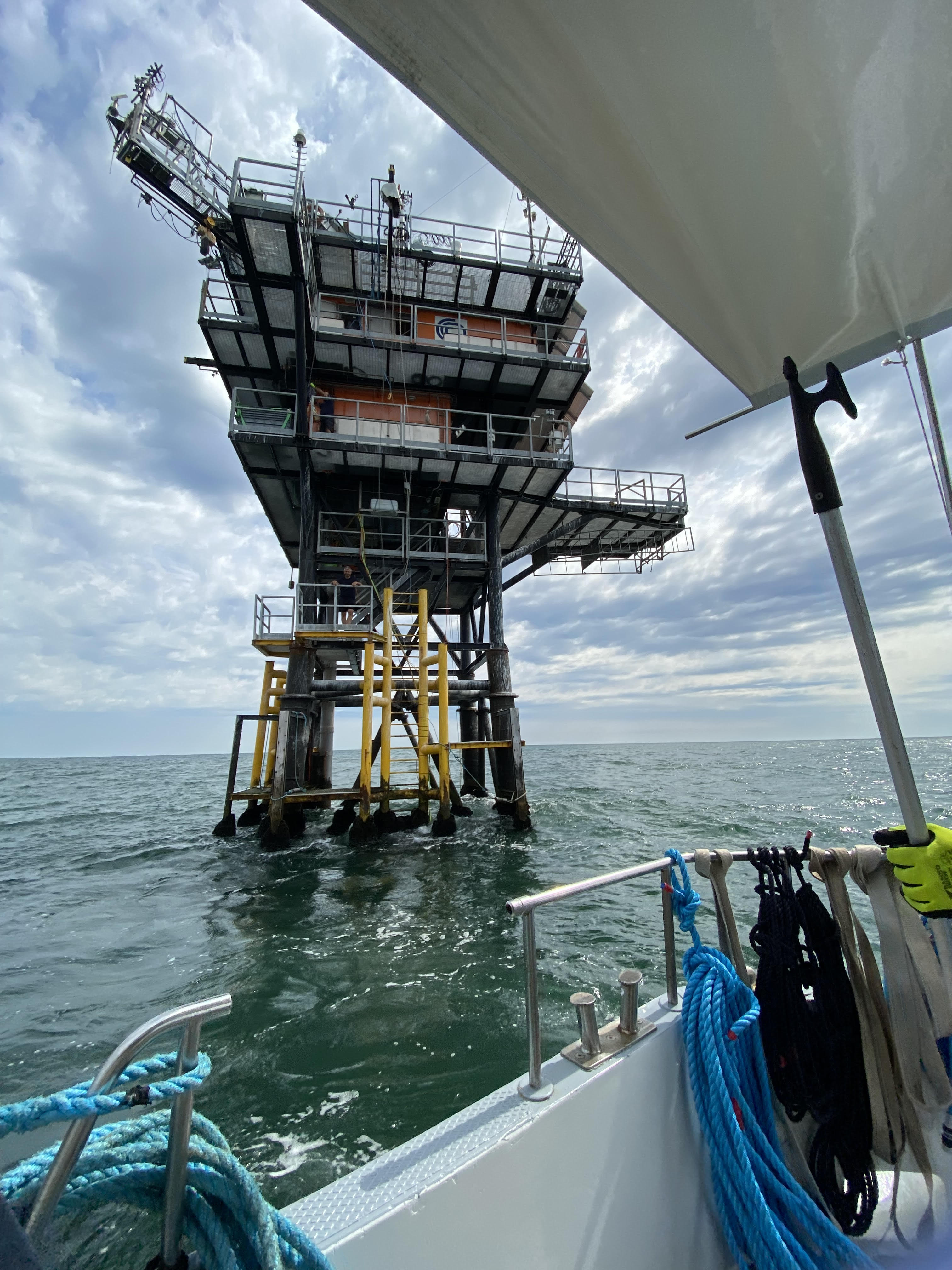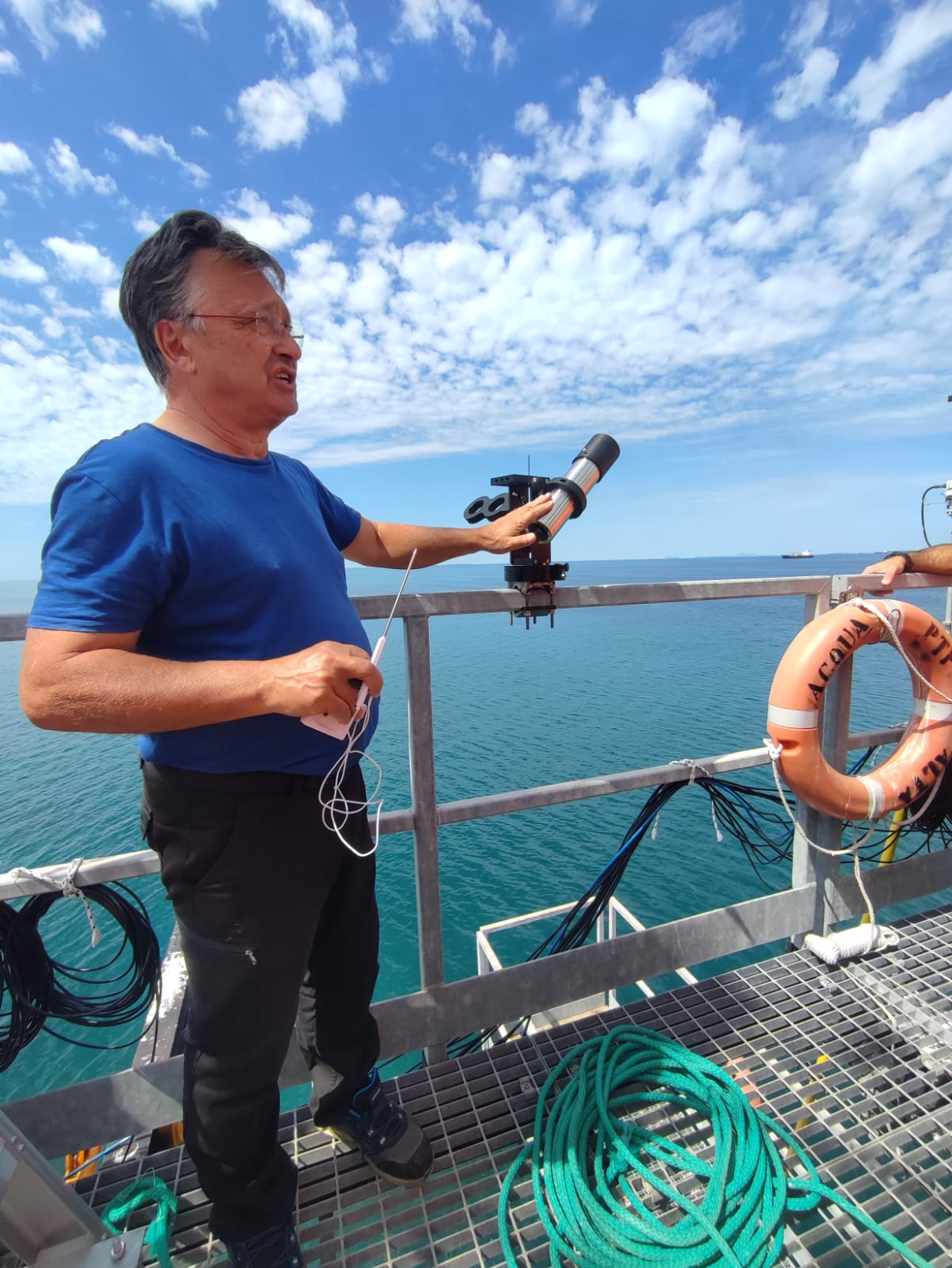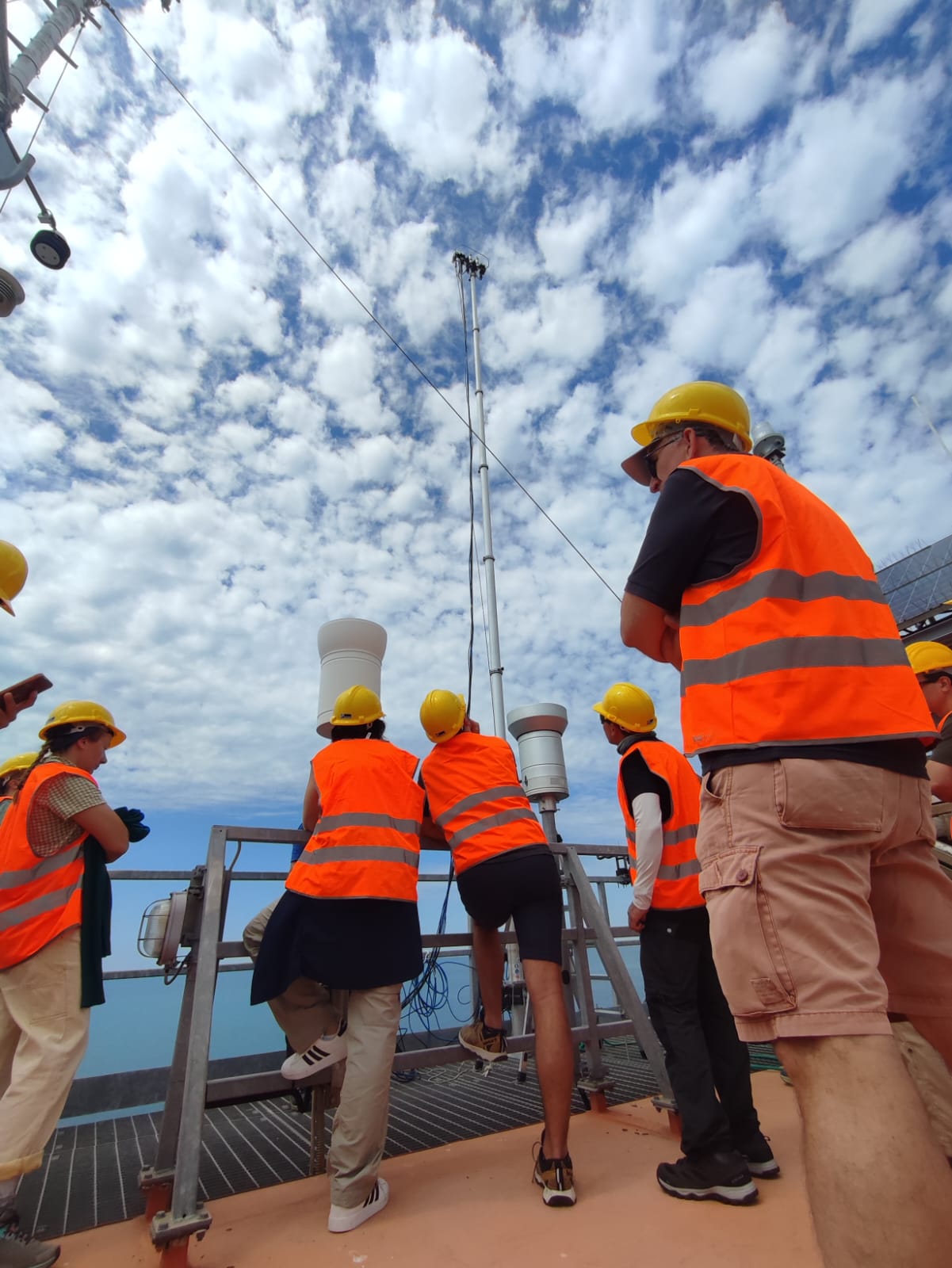Blog
International Training Advances Ocean Color Satellite Validation Through Next-Generation Expertise
Posted on Tuesday, July 29, 2025 at 16:30:00A Comprehensive Learning Experience
The intensive two-week program, also known as FICE-2025 (Field Inter-Comparison Exercise), combined theoretical foundations with hands-on field experience in one of Europe's most unique marine research settings. Participants gathered on the enchanting island of San Servolo in the Venetian Lagoon, with practical sessions extending to the iconic Acqua Alta Oceanographic Tower (AAOT) in the Adriatic Sea.
The training addressed one of the most challenging aspects of ocean color science: ensuring that field radiometers provide accurate, reliable data for satellite validation. As the program emphasized, dealing with radiometers requires specialized expertise, as their response to light can change significantly over time, and laboratory calibration conditions differ substantially from actual sea conditions.
Building Essential Skills for Satellite Validation
The curriculum included foundational classroom lectures on in situ radiometry principles and Fiducial Reference Measurement (FRM) standards as defined by the Committee on Earth Observation Satellites. Participants also practiced hands-on measurement exercises and field observations on San Servolo island and at the AAOT, where they witnessed expert-led intercomparison exercises while learning proper field protocols.
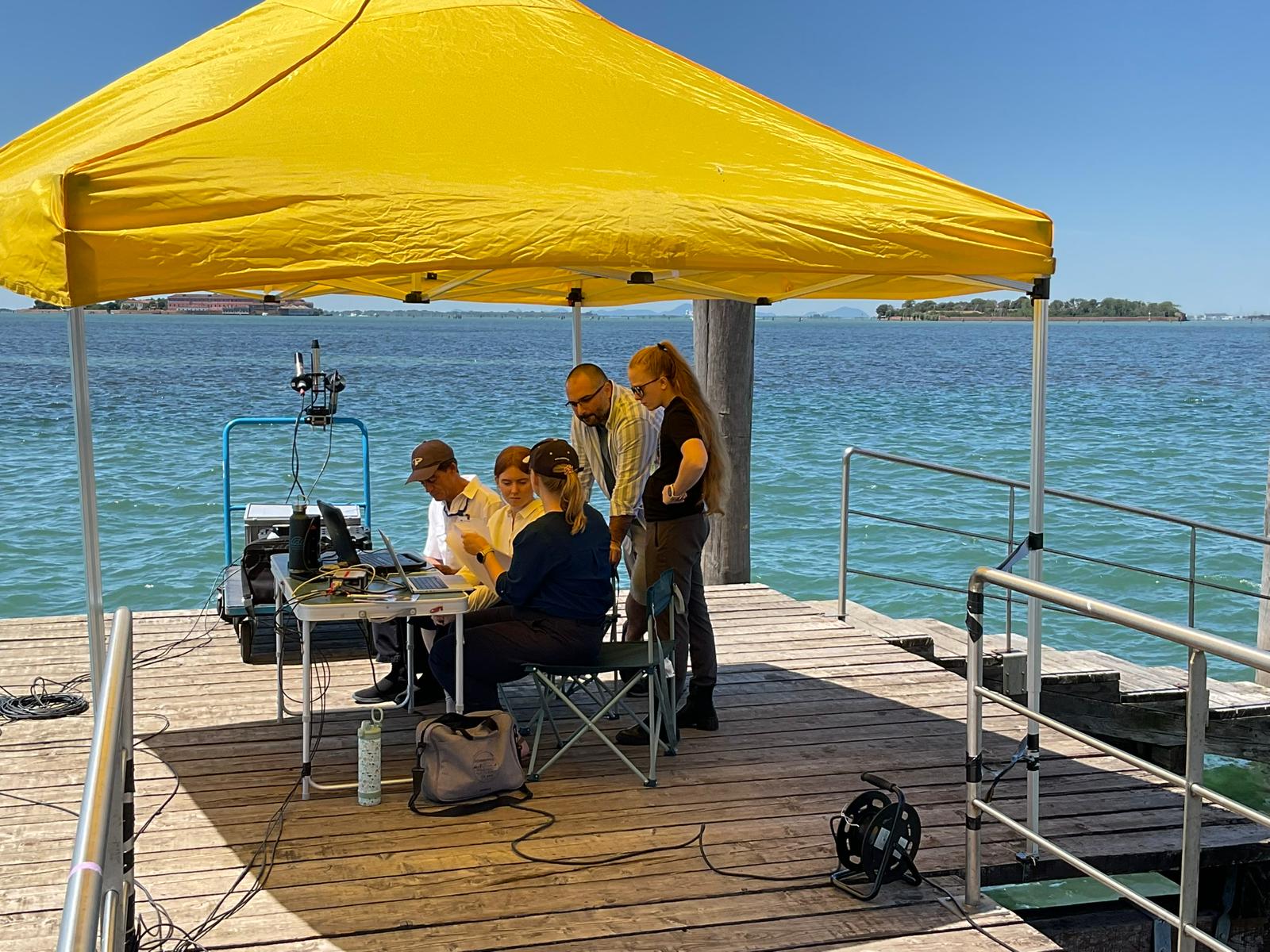
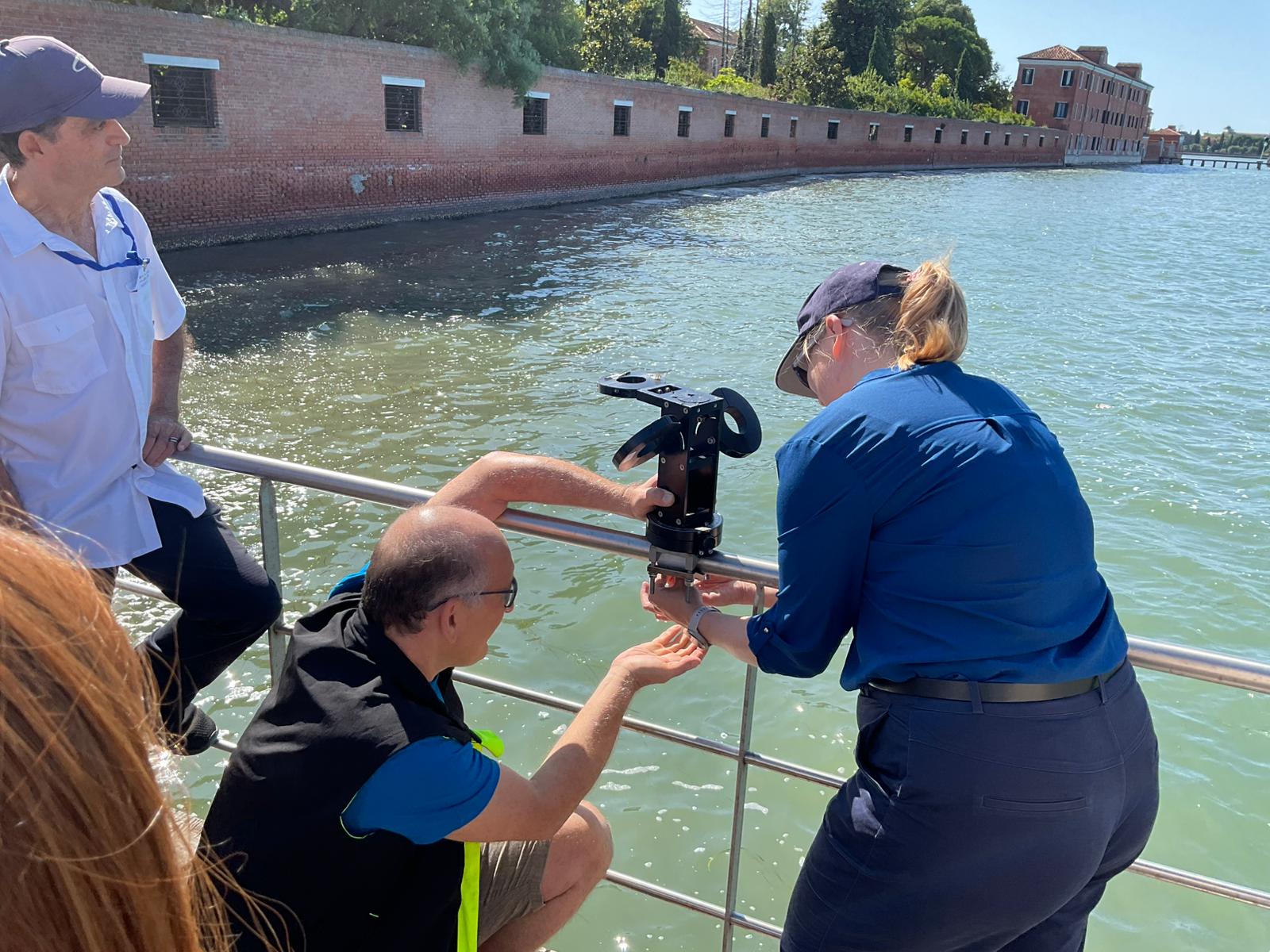 Above-water radiometry demonstrations were given on the island of San Servolo (Photo credit: Juan Ignacio Gossn)
Above-water radiometry demonstrations were given on the island of San Servolo (Photo credit: Juan Ignacio Gossn)A significant focus was placed on data validation techniques for satellite missions, including OLCI and PACE. The training concluded with comprehensive data analysis sessions using advanced open-source software developed by Eumetsat and NASA, ThoMaS and HyperCP, covering practical guidelines for radiometer calibration, interpreting measurement uncertainties, and conducting rigorous satellite data matchup studies.
Real Impact and Connections
"It has been, by far, one of the most memorable experiences during my PhD," noted Sergio Molano Cárdenas, reflecting the program's profound impact on early-career researchers. Another participant, Kate Koltsova, highlighted the unique combination of "theoretical sessions at Venice International University to practical fieldwork at the Acqua Alta Oceanographic Tower," covering state-of-the-art approaches to making and processing high-quality field measurements according to community-derived protocols.
Beyond technical skills, attendees emphasized the value of building professional networks. As participant Alejandro Román Vázquez shared, "Equally important has been the chance to meet professionals and experts in the ocean colour community, as well as early-career researchers. These connections are certainly enriching my training in this field and contributing to the growth of this vibrant community."
Strengthening the Global Ocean Color Community
Beyond technical training, the program fostered invaluable connections among professionals and early-career researchers in the ocean color community. The FRM4SOC-2 project, funded by the European Commission as part of the EU Copernicus Programme and implemented by EUMETSAT, aims to develop an operational network of high-quality radiometric measurements for satellite validation. This training event represents a crucial step in broadcasting guidelines and tools to the broader community, ensuring that future satellite observations maintain the highest standards of accuracy and reliability.
As participants return to their home institutions worldwide, they carry with them enhanced technical skills and the collaborative spirit essential for addressing our planet's oceanographic challenges through improved satellite monitoring capabilities.
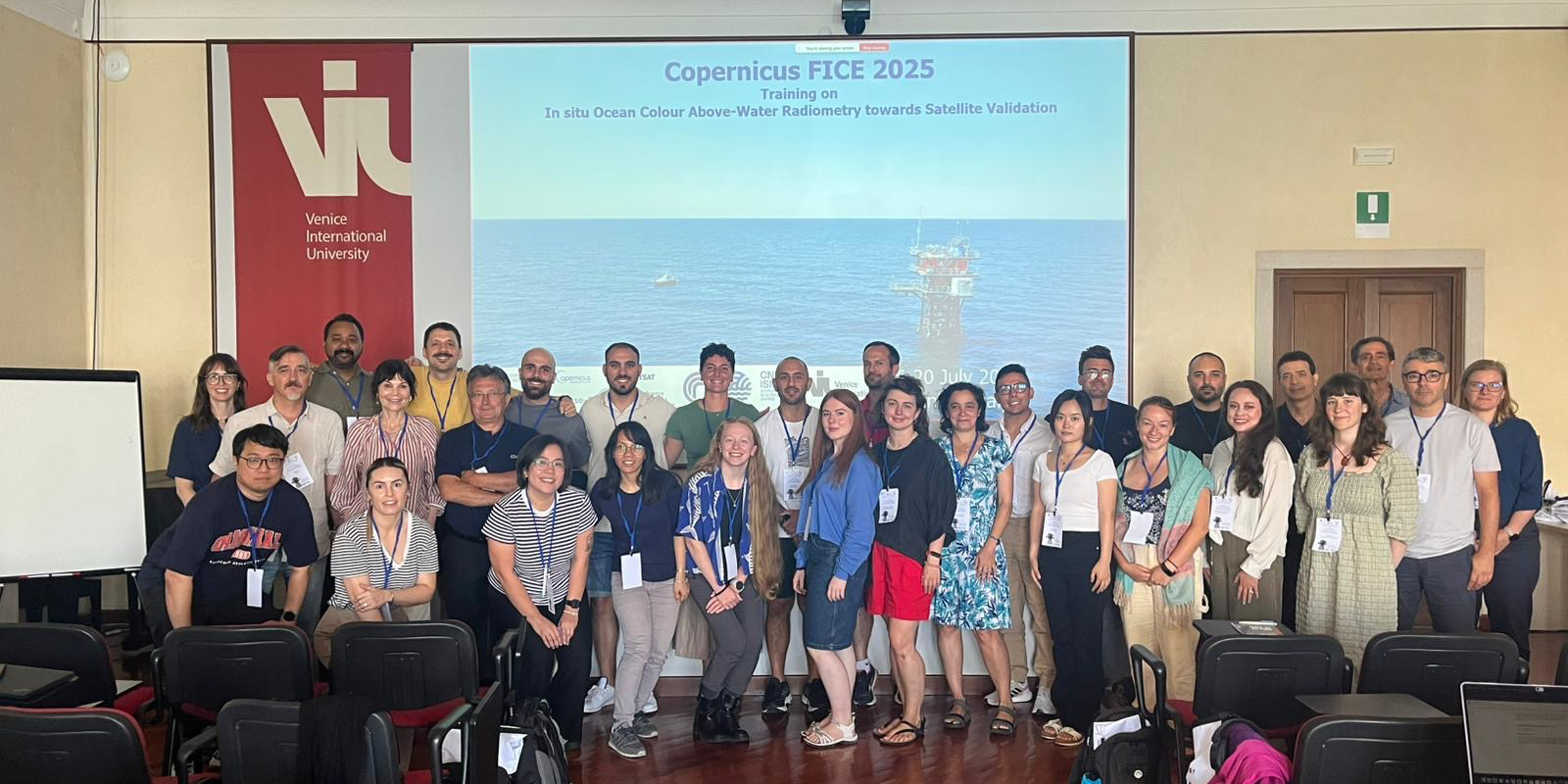 FICE participants and some of the training team (missing in the photo: Hayley Evers-King, Vittorio Brando, Aga Bialek, Pietro Sciuto) (Photo credit: Vittorio Brando)
FICE participants and some of the training team (missing in the photo: Hayley Evers-King, Vittorio Brando, Aga Bialek, Pietro Sciuto) (Photo credit: Vittorio Brando)

